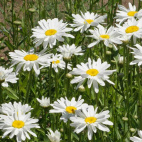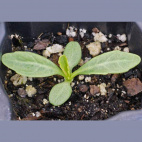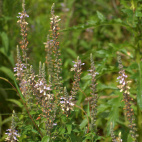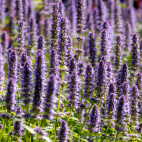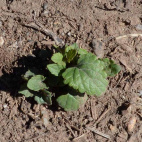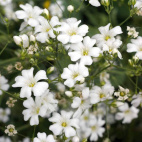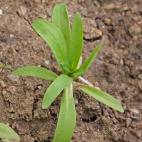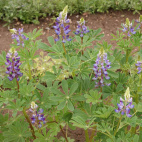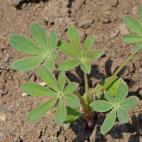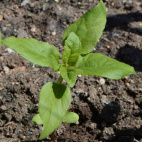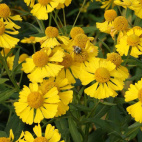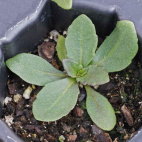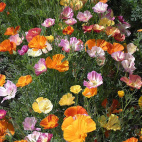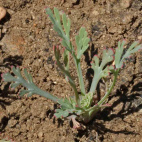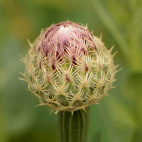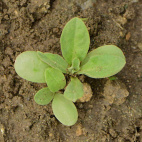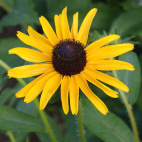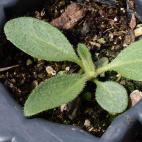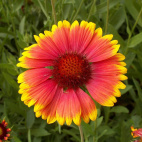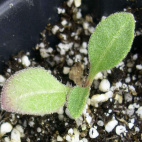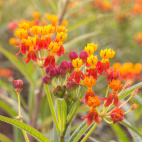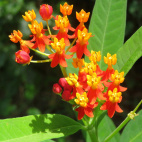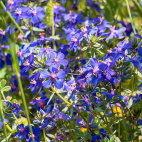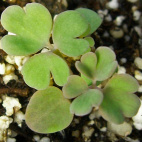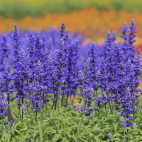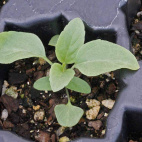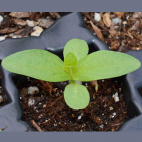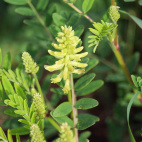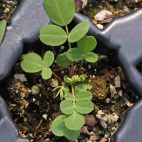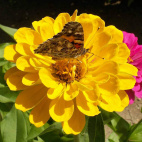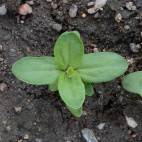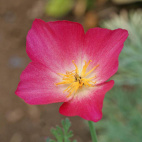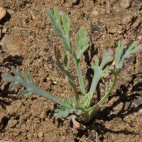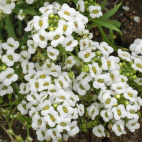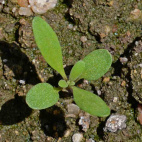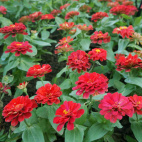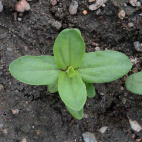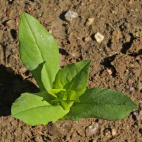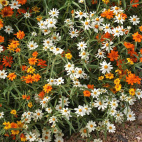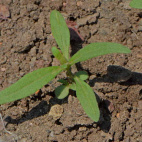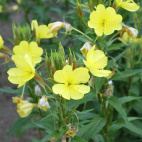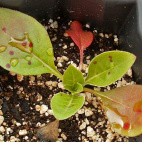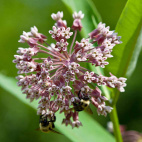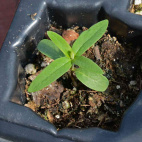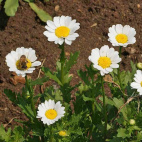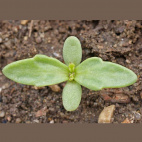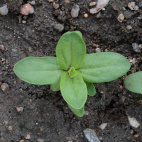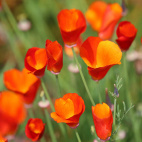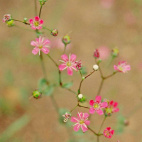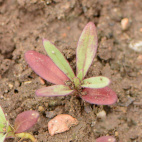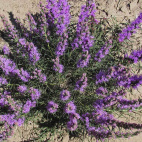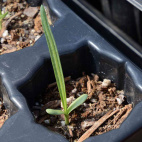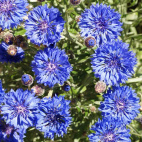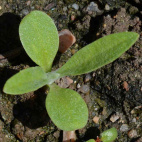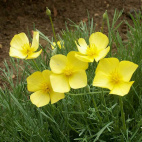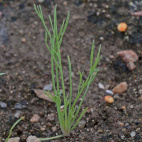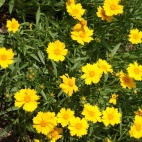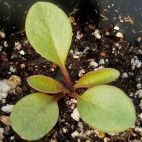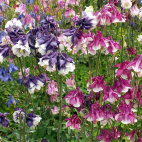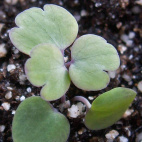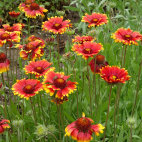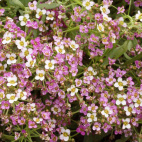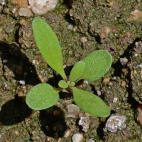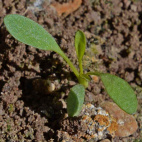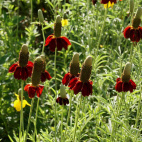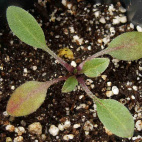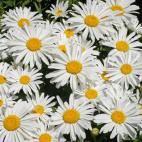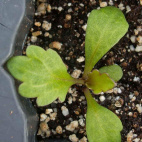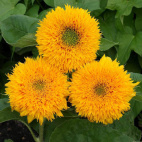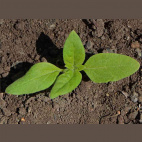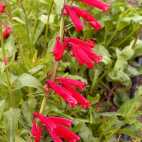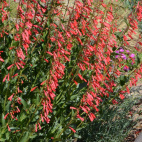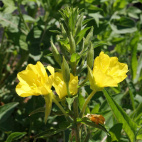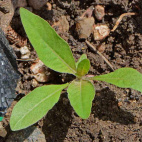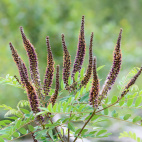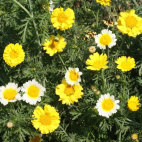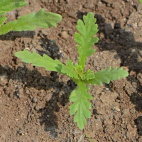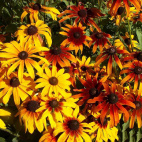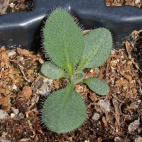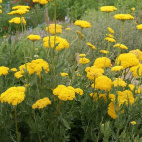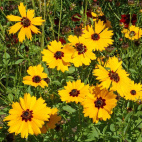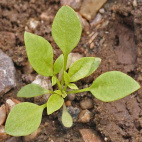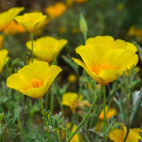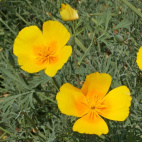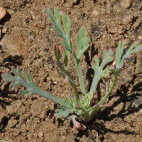Color
Availability
USDA Zone
Region
Type
Duration
Season
Germination
Soil
Sunlight
Height
Use
Narrow Your Search
Color
Availability
USDA Zone
Region
Type
Duration
Season
Germination
Soil
Sunlight
Height
Use
Wildflower Seeds - Mountain Region
-
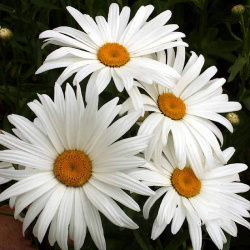 On Sale!
Alaska Shasta Daisy Seeds
Chrysanthemum maximum
Once established, this hardy perennial forms dense colonies of beautiful, white-petaled blooms. This easy-to-grow daisy looks a lot like the Ox Eye Daisy, but it is not as invasive.Quick View$2.98 Pkt - $7.92 / Oz
On Sale!
Alaska Shasta Daisy Seeds
Chrysanthemum maximum
Once established, this hardy perennial forms dense colonies of beautiful, white-petaled blooms. This easy-to-grow daisy looks a lot like the Ox Eye Daisy, but it is not as invasive.Quick View$2.98 Pkt - $7.92 / Oz -
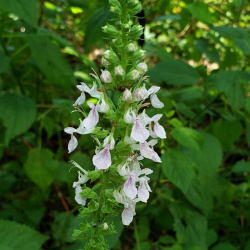 American Germander Seeds
Teucrium canadense
Clustered on velvety spikes, these pink to lavender flowers attract butterflies and hummingbirds. This native perennial is also known as Wild Basil, but we don't recommend consuming it.Quick View$3.48 Pkt - $30.00 / Oz
American Germander Seeds
Teucrium canadense
Clustered on velvety spikes, these pink to lavender flowers attract butterflies and hummingbirds. This native perennial is also known as Wild Basil, but we don't recommend consuming it.Quick View$3.48 Pkt - $30.00 / Oz -
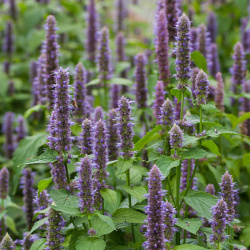 Anise Hyssop Seeds
Agastache foeniculum
A member of the mint family, this wildflower brings a delightfully rich scent to any herb garden. The tall, lavender flower spikes attract multitudes of hummingbirds, bees, and butterflies. It is a favorite with beekeepers, and we have found that the anise honey from this plant is excellent!Quick Viewx
Anise Hyssop Seeds
Agastache foeniculum
A member of the mint family, this wildflower brings a delightfully rich scent to any herb garden. The tall, lavender flower spikes attract multitudes of hummingbirds, bees, and butterflies. It is a favorite with beekeepers, and we have found that the anise honey from this plant is excellent!Quick ViewxAnise Hyssop Seeds
Agastache foeniculum
A member of the mint family, this wildflower brings a delightfully rich scent to any herb garden. The tall, lavender flower spikes attract multitudes of hummingbirds, bees, and butterflies. It is a favorite with beekeepers, and we have found that the anise honey from this plant is excellent!
$3.48 Pkt - $16.57 / Oz -
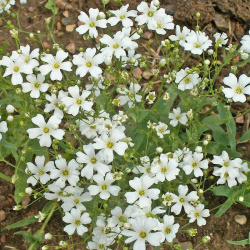 On Sale!
Annual Baby's Breath Seeds
Gypsophila elegans
Delicate, white sprays create a vision of loveliness for any occasion. This easy-to-grow annual grows quickly, and is popular for floral bouquets, but looks great in the garden too.Quick View$2.98 Pkt - $5.96 / Oz
On Sale!
Annual Baby's Breath Seeds
Gypsophila elegans
Delicate, white sprays create a vision of loveliness for any occasion. This easy-to-grow annual grows quickly, and is popular for floral bouquets, but looks great in the garden too.Quick View$2.98 Pkt - $5.96 / Oz -
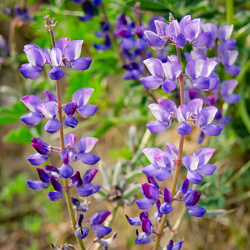 Arroyo Lupine Seeds
Lupinus succulentus
Though native to California, this lovely wildflower can be found throughout the American southwest. This annual grows quickly and is very easy to grow in the garden, no matter where you live.Quick Viewx
Arroyo Lupine Seeds
Lupinus succulentus
Though native to California, this lovely wildflower can be found throughout the American southwest. This annual grows quickly and is very easy to grow in the garden, no matter where you live.Quick ViewxArroyo Lupine Seeds
Lupinus succulentus
Though native to California, this lovely wildflower can be found throughout the American southwest. This annual grows quickly and is very easy to grow in the garden, no matter where you live.
$3.48 Pkt - $9.15 / Oz -
 Autumn Beauty Sunflower Seeds
Helianthus annuus
The warm autumn tones of this sunflower mix are very popular and will add rustic beauty to your fall decor. This annual is relatively tall and will produce many different stripes and colors of sunflowers. The really neat thing about sunflowers is that their flower heads follow the movement of the sun throughout the day!Quick Viewx
Autumn Beauty Sunflower Seeds
Helianthus annuus
The warm autumn tones of this sunflower mix are very popular and will add rustic beauty to your fall decor. This annual is relatively tall and will produce many different stripes and colors of sunflowers. The really neat thing about sunflowers is that their flower heads follow the movement of the sun throughout the day!Quick ViewxAutumn Beauty Sunflower Seeds
Helianthus annuus
The warm autumn tones of this sunflower mix are very popular and will add rustic beauty to your fall decor. This annual is relatively tall and will produce many different stripes and colors of sunflowers. The really neat thing about sunflowers is that their flower heads follow the movement of the sun throughout the day!
$3.48 Pkt - $6.84 / Oz -
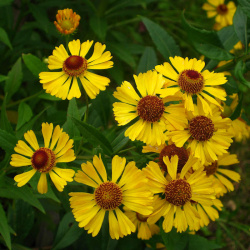 Autumn Sneezeweed Seeds
Helenium autumnale
If you tend to have heavy or wet soil in your garden spot, then these may be just the wildflower that you need! The daisy-like perennial can also be grown in a medium soil but needs to be well-watered, as they do not tolerate drought.Quick View$2.98 Pkt - $10.57 / Oz
Autumn Sneezeweed Seeds
Helenium autumnale
If you tend to have heavy or wet soil in your garden spot, then these may be just the wildflower that you need! The daisy-like perennial can also be grown in a medium soil but needs to be well-watered, as they do not tolerate drought.Quick View$2.98 Pkt - $10.57 / Oz -
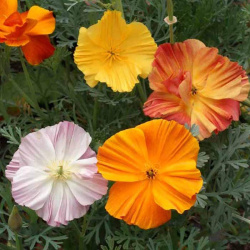 On Sale!
Ballerina California Poppy Seed Mix
Eschscholzia californica
Beautiful shades of red, pink, and gold will dazzle the eye with this popular California Poppy mix. The silky, cup-shaped flowers form on slender stems just like the common Orange California Poppy, but this shows off with many more colors.Quick Viewx
On Sale!
Ballerina California Poppy Seed Mix
Eschscholzia californica
Beautiful shades of red, pink, and gold will dazzle the eye with this popular California Poppy mix. The silky, cup-shaped flowers form on slender stems just like the common Orange California Poppy, but this shows off with many more colors.Quick ViewxBallerina California Poppy Seed Mix
Eschscholzia californica
Beautiful shades of red, pink, and gold will dazzle the eye with this popular California Poppy mix. The silky, cup-shaped flowers form on slender stems just like the common Orange California Poppy, but this shows off with many more colors.
$3.48 Pkt - $13.00 / Oz -
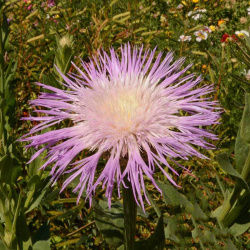 On Sale!
Basketflower Seeds
Centaurea americana
The basket-like base of these blossoms holds delicate petals, hence its name. Although it is a distant relative of the thistle, the colorful flowers give off a sweet honey-like scent.Quick View$3.48 Pkt - $16.57 / Oz
On Sale!
Basketflower Seeds
Centaurea americana
The basket-like base of these blossoms holds delicate petals, hence its name. Although it is a distant relative of the thistle, the colorful flowers give off a sweet honey-like scent.Quick View$3.48 Pkt - $16.57 / Oz -
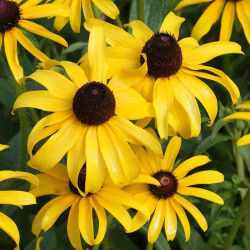 Black Eyed Susan Seeds
Rudbeckia hirta
Black-eyed Susan is probably the most popular wildflower for summer gardens. This biennial is so easy to grow, and produces a lot of showy yellow blooms that are liked by butterflies - so why not have it in the garden?Quick View$2.98 Pkt - $7.09 / Oz
Black Eyed Susan Seeds
Rudbeckia hirta
Black-eyed Susan is probably the most popular wildflower for summer gardens. This biennial is so easy to grow, and produces a lot of showy yellow blooms that are liked by butterflies - so why not have it in the garden?Quick View$2.98 Pkt - $7.09 / Oz -
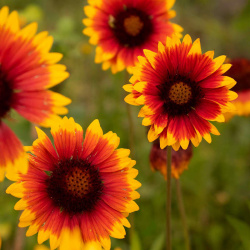 On Sale!
Blanket Flower Seeds
Gaillardia aristata
Reminiscent of an Indian blanket, this bi-colored variety comes in yellow, red, burgundy, and brown. Gaillardia Aristata is a native wildflower of the Northern Rockies, so it is better equipped to handle cold than its cousin, Indian Blanket. Buy these easy-to-grow Gaillardia Aristata seeds for color all season long.Quick Viewx
On Sale!
Blanket Flower Seeds
Gaillardia aristata
Reminiscent of an Indian blanket, this bi-colored variety comes in yellow, red, burgundy, and brown. Gaillardia Aristata is a native wildflower of the Northern Rockies, so it is better equipped to handle cold than its cousin, Indian Blanket. Buy these easy-to-grow Gaillardia Aristata seeds for color all season long.Quick ViewxBlanket Flower Seeds
Gaillardia aristata
Reminiscent of an Indian blanket, this bi-colored variety comes in yellow, red, burgundy, and brown. Gaillardia Aristata is a native wildflower of the Northern Rockies, so it is better equipped to handle cold than its cousin, Indian Blanket. Buy these easy-to-grow Gaillardia Aristata seeds for color all season long.
$3.48 Pkt - $7.59 / Oz -
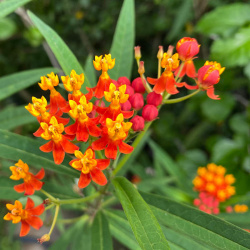 On Sale!
Blood Flower Seeds
Asclepias curassavica
Also known as tropical milkweed, these brilliant red and yellow blossoms explode with color in their first growing season. Although this species is a member of the Milkweed family, recent studies have shown that it actually may be detrimental to the Monarch Butterfly, especially in southern climates where the plants can survive year-round. The plants can harbor diseases that harm the Monarch, and disrupt their normal migratory patterns. Please only use this plant as an annual, and do not let it winter over!Quick Viewx
On Sale!
Blood Flower Seeds
Asclepias curassavica
Also known as tropical milkweed, these brilliant red and yellow blossoms explode with color in their first growing season. Although this species is a member of the Milkweed family, recent studies have shown that it actually may be detrimental to the Monarch Butterfly, especially in southern climates where the plants can survive year-round. The plants can harbor diseases that harm the Monarch, and disrupt their normal migratory patterns. Please only use this plant as an annual, and do not let it winter over!Quick ViewxBlood Flower Seeds
Asclepias curassavica
Also known as tropical milkweed, these brilliant red and yellow blossoms explode with color in their first growing season. Although this species is a member of the Milkweed family, recent studies have shown that it actually may be detrimental to the Monarch Butterfly, especially in southern climates where the plants can survive year-round. The plants can harbor diseases that harm the Monarch, and disrupt their normal migratory patterns. Please only use this plant as an annual, and do not let it winter over!
$3.48 Pkt - $14.49 / Oz -
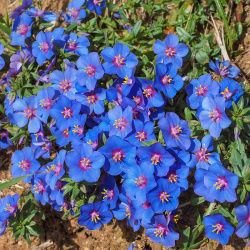 Out Of Stock
Blue Pimpernel Seeds
Anagallis monelli
One of the brightest, truest blues in nature, these eye-catching flowers originally grew wild along the rocky slopes and sand dunes of the Mediterranean coast. This annual is a lovely choice for hanging baskets or an annual wildflower planting.Quick Viewx
Out Of Stock
Blue Pimpernel Seeds
Anagallis monelli
One of the brightest, truest blues in nature, these eye-catching flowers originally grew wild along the rocky slopes and sand dunes of the Mediterranean coast. This annual is a lovely choice for hanging baskets or an annual wildflower planting.Quick ViewxBlue Pimpernel Seeds
Anagallis monelli
One of the brightest, truest blues in nature, these eye-catching flowers originally grew wild along the rocky slopes and sand dunes of the Mediterranean coast. This annual is a lovely choice for hanging baskets or an annual wildflower planting.
$2.98 Pkt - $10.57 / Oz -
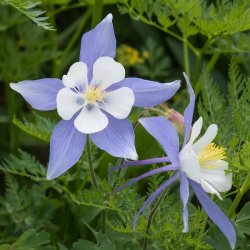 Blue Rocky Mountain Columbine Seeds
Aquilegia caerulea
This blue beauty grows in the meadows and cliffs of the Rocky Mountains. Many gardeners prize this clump-forming perennial with its large upward-facing blue and white flowers - it is so unique! Fill your home garden with a variety of our Midwest wildflower seed mixes.Quick Viewx
Blue Rocky Mountain Columbine Seeds
Aquilegia caerulea
This blue beauty grows in the meadows and cliffs of the Rocky Mountains. Many gardeners prize this clump-forming perennial with its large upward-facing blue and white flowers - it is so unique! Fill your home garden with a variety of our Midwest wildflower seed mixes.Quick ViewxBlue Rocky Mountain Columbine Seeds
Aquilegia caerulea
This blue beauty grows in the meadows and cliffs of the Rocky Mountains. Many gardeners prize this clump-forming perennial with its large upward-facing blue and white flowers - it is so unique! Fill your home garden with a variety of our Midwest wildflower seed mixes.
$3.48 Pkt - $20.16 / Oz -
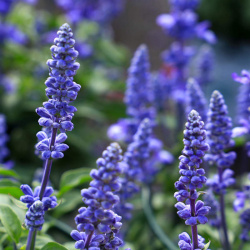 On Sale!
Blue Sage Seeds
Salvia farinacea
Dressed in vivid blue, these wildflower spikes are easy to grow. This perennial comes from Texas, so it can tolerate a lot of heat and drought. This plant has a wild habit and may look a little unruly in a refined garden.Quick View$3.48 Pkt - $15.72 / Oz
On Sale!
Blue Sage Seeds
Salvia farinacea
Dressed in vivid blue, these wildflower spikes are easy to grow. This perennial comes from Texas, so it can tolerate a lot of heat and drought. This plant has a wild habit and may look a little unruly in a refined garden.Quick View$3.48 Pkt - $15.72 / Oz -
 California Giants Zinnia Seed Mix
Zinnia elegans
These enormous zinnias come in a stunning mix of pink, purple, red, orange, white, and yellow. This easy-to-grow annual blooms all summer long, and will attract butterflies to your yard and garden.Quick View$3.48 Pkt - $7.59 / Oz
California Giants Zinnia Seed Mix
Zinnia elegans
These enormous zinnias come in a stunning mix of pink, purple, red, orange, white, and yellow. This easy-to-grow annual blooms all summer long, and will attract butterflies to your yard and garden.Quick View$3.48 Pkt - $7.59 / Oz -
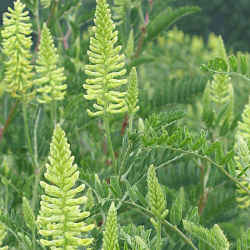 On Sale!
Canadian Milk Vetch Seeds
Astragalus canadensis
Huge plumes of fern-like foliage and spiky flowers set this unusual wildflower apart. Vigorous growth and adaptability make this plant a good choice for erosion control or prairie restoration.Quick View$3.25 Pkt - $7.92 / Oz
On Sale!
Canadian Milk Vetch Seeds
Astragalus canadensis
Huge plumes of fern-like foliage and spiky flowers set this unusual wildflower apart. Vigorous growth and adaptability make this plant a good choice for erosion control or prairie restoration.Quick View$3.25 Pkt - $7.92 / Oz -
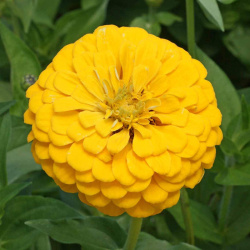 On Sale!
Canary Bird Zinnia Seeds
Zinnia elegans
Aglow with color, these luminous yellow blossoms will light up your garden with impressive blossoms. They can even be brought inside as cut flowers. Butterflies also appreciate the bright blooms of this easy annual.Quick View$3.48 Pkt - $7.92 / Oz
On Sale!
Canary Bird Zinnia Seeds
Zinnia elegans
Aglow with color, these luminous yellow blossoms will light up your garden with impressive blossoms. They can even be brought inside as cut flowers. Butterflies also appreciate the bright blooms of this easy annual.Quick View$3.48 Pkt - $7.92 / Oz -
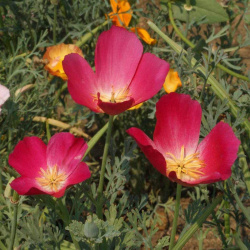 Carmine King California Poppy Seeds
Eschscholzia californica
A delicate rose pink with white centers, these blossoms are fit for royalty. This variety possesses the form and beauty of the Orange California Poppy, but just blooms in a different color.Quick View$2.98 Pkt - $9.54 / Oz
Carmine King California Poppy Seeds
Eschscholzia californica
A delicate rose pink with white centers, these blossoms are fit for royalty. This variety possesses the form and beauty of the Orange California Poppy, but just blooms in a different color.Quick View$2.98 Pkt - $9.54 / Oz -
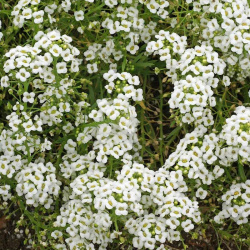 Carpet of Snow Sweet Alyssum Seeds
Lobularia maritima
Masses of tiny white flowers give the illusion of snow without the cold. This annual is perfect for hanging baskets, rock gardens, or a groundcover. As an added bonus, the flowers have a sweet scent that pollinators find attractive.Quick View$3.48 Pkt - $11.88 / Oz
Carpet of Snow Sweet Alyssum Seeds
Lobularia maritima
Masses of tiny white flowers give the illusion of snow without the cold. This annual is perfect for hanging baskets, rock gardens, or a groundcover. As an added bonus, the flowers have a sweet scent that pollinators find attractive.Quick View$3.48 Pkt - $11.88 / Oz -
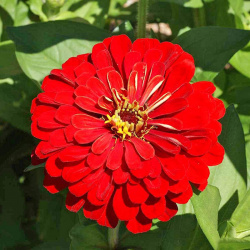 On Sale!
Cherry Queen Zinnia Seeds
Zinnia elegans
Robed in crimson, these stately beauties will not go unnoticed. Zinnias are easy to grow and will quickly reach blooming size, making them a fun project for children to grow.Quick View$3.48 Pkt - $7.92 / Oz
On Sale!
Cherry Queen Zinnia Seeds
Zinnia elegans
Robed in crimson, these stately beauties will not go unnoticed. Zinnias are easy to grow and will quickly reach blooming size, making them a fun project for children to grow.Quick View$3.48 Pkt - $7.92 / Oz -
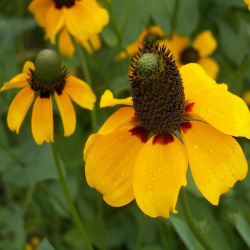 Clasping Coneflower Seeds
Rudbeckia amplexicaulis
Though similar to the Black-Eyed Susan, this bright wildflower is identified by its clasping coneflower leaves and a bit of red showing at the base of the yellow petals. This easy-to-grow annual requires little care and will grow in a wide variety of garden locations.Quick Viewx
Clasping Coneflower Seeds
Rudbeckia amplexicaulis
Though similar to the Black-Eyed Susan, this bright wildflower is identified by its clasping coneflower leaves and a bit of red showing at the base of the yellow petals. This easy-to-grow annual requires little care and will grow in a wide variety of garden locations.Quick ViewxClasping Coneflower Seeds
Rudbeckia amplexicaulis
Though similar to the Black-Eyed Susan, this bright wildflower is identified by its clasping coneflower leaves and a bit of red showing at the base of the yellow petals. This easy-to-grow annual requires little care and will grow in a wide variety of garden locations.
$2.98 Pkt - $7.27 / Oz -
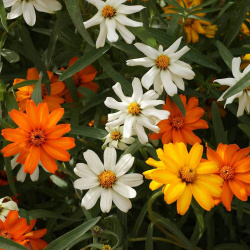 Classic Zinnia Seeds
Zinnia linearis
This time-honored Zinnia variety produces orange, yellow, and white blossoms on compact, bushy plants. These flowers are more like a daisy than many Zinnias, but they are still well-loved by the bees and butterflies.Quick View$3.48 Pkt - $32.00 / Oz
Classic Zinnia Seeds
Zinnia linearis
This time-honored Zinnia variety produces orange, yellow, and white blossoms on compact, bushy plants. These flowers are more like a daisy than many Zinnias, but they are still well-loved by the bees and butterflies.Quick View$3.48 Pkt - $32.00 / Oz -
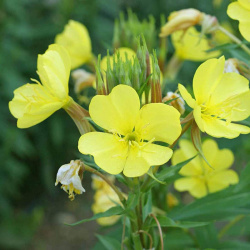 Common Evening Primrose Seeds
Oenothera lamarckiana
Sense a special evening glow from a planting of these luminous golden flowers. The noonday heat withers the blossoms of each day, but new blossoms then bloom each evening. This wildflower is easy to grow.Quick View$2.98 Pkt - $7.09 / Oz
Common Evening Primrose Seeds
Oenothera lamarckiana
Sense a special evening glow from a planting of these luminous golden flowers. The noonday heat withers the blossoms of each day, but new blossoms then bloom each evening. This wildflower is easy to grow.Quick View$2.98 Pkt - $7.09 / Oz -
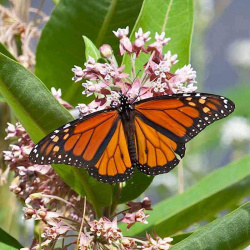 Common Milkweed Seeds
Asclepias syriaca
This familiar wildflower is a significant food source for monarch caterpillars and butterflies, and so it is used for butterfly gardens and waystations. This common variety spreads easily, but most gardeners do not mind if it spreads a bit.Quick View$3.48 Pkt - $12.65 / Oz
Common Milkweed Seeds
Asclepias syriaca
This familiar wildflower is a significant food source for monarch caterpillars and butterflies, and so it is used for butterfly gardens and waystations. This common variety spreads easily, but most gardeners do not mind if it spreads a bit.Quick View$3.48 Pkt - $12.65 / Oz -
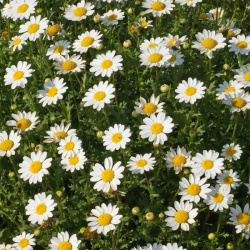 Creeping Daisy Seeds
Chrysanthemum paludosum
These sweet little daisies are a perfect choice for rock gardens, containers, window boxes, or as a ground cover. The low-growing Chrysanthemum paludosum is an annual but reseeds itself to produce plants the following year.Quick View$3.48 Pkt - $14.07 / Oz
Creeping Daisy Seeds
Chrysanthemum paludosum
These sweet little daisies are a perfect choice for rock gardens, containers, window boxes, or as a ground cover. The low-growing Chrysanthemum paludosum is an annual but reseeds itself to produce plants the following year.Quick View$3.48 Pkt - $14.07 / Oz -
 Dahlia Flowered Zinnia Seed Mix
Zinnia elegans
These bright flowers come in a splendid array of colors and are shaped like Dahlias. This easy-to-grow annual blooms all summer long, and catches the attention of wandering butterflies.Quick View$3.48 Pkt - $7.59 / Oz
Dahlia Flowered Zinnia Seed Mix
Zinnia elegans
These bright flowers come in a splendid array of colors and are shaped like Dahlias. This easy-to-grow annual blooms all summer long, and catches the attention of wandering butterflies.Quick View$3.48 Pkt - $7.59 / Oz -
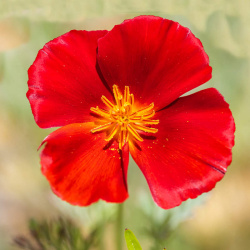 Out Of Stock
Dark Red California Poppy Seeds
Eschscholzia californica
This rare variety blooms in a rich, crimson hue. It is not always available, so check out Red Chief California Poppy if this variety is unavailable.Quick Viewx
Out Of Stock
Dark Red California Poppy Seeds
Eschscholzia californica
This rare variety blooms in a rich, crimson hue. It is not always available, so check out Red Chief California Poppy if this variety is unavailable.Quick ViewxDark Red California Poppy Seeds
Eschscholzia californica
This rare variety blooms in a rich, crimson hue. It is not always available, so check out Red Chief California Poppy if this variety is unavailable.
$3.48 Pkt - $8.93 / Oz -
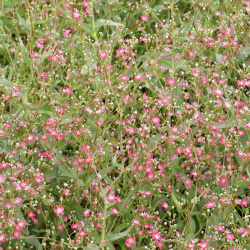 Deep Carmine Baby's Breath Seeds
Gypsophila elegans
Tiny crimson flowers, and feathery gray-green foliage gives a delicate, airy feel. This annual is perfect for floral arrangements and is very easy to grow in the home garden.Quick View$3.25 Pkt - $9.54 / Oz
Deep Carmine Baby's Breath Seeds
Gypsophila elegans
Tiny crimson flowers, and feathery gray-green foliage gives a delicate, airy feel. This annual is perfect for floral arrangements and is very easy to grow in the home garden.Quick View$3.25 Pkt - $9.54 / Oz -
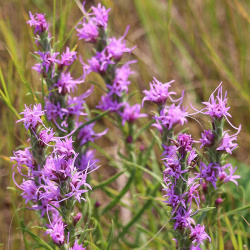 On Sale!
Dotted Blazing Star Seeds
Liatris punctata
A delightful mini version, this Blazing Star is perfect for fresh or dried arrangements. This striking native attracts many butterflies, bees, and hummingbirds. This perennial slowly grows a corm under the ground, which will grow out year after year.Quick View$3.75 Pkt - $26.00 / Oz
On Sale!
Dotted Blazing Star Seeds
Liatris punctata
A delightful mini version, this Blazing Star is perfect for fresh or dried arrangements. This striking native attracts many butterflies, bees, and hummingbirds. This perennial slowly grows a corm under the ground, which will grow out year after year.Quick View$3.75 Pkt - $26.00 / Oz -
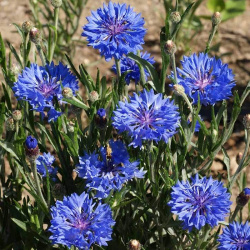 Dwarf Blue Bachelor Button Cornflower Seeds
Centaurea cyanus
Best known for its vivid blue color, this old-fashioned annual wildflower continues to be a favorite. Lovely fresh or dried, this dwarf grows less than a foot tall and works well in small spaces.Quick View$3.48 Pkt - $5.96 / Oz
Dwarf Blue Bachelor Button Cornflower Seeds
Centaurea cyanus
Best known for its vivid blue color, this old-fashioned annual wildflower continues to be a favorite. Lovely fresh or dried, this dwarf grows less than a foot tall and works well in small spaces.Quick View$3.48 Pkt - $5.96 / Oz -
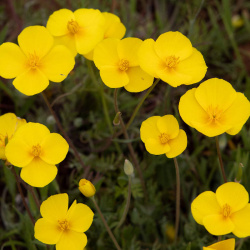 On Sale!
Dwarf California Poppy Seeds
Eschscholzia caespitosa
Growing just 8" tall, these golden beauties are beautiful when planted en masse. The silky, cup-shaped flowers form on slender stems creating a petite version of the incredibly popular Orange California Poppy. Great for small spaces or container gardening.Quick Viewx
On Sale!
Dwarf California Poppy Seeds
Eschscholzia caespitosa
Growing just 8" tall, these golden beauties are beautiful when planted en masse. The silky, cup-shaped flowers form on slender stems creating a petite version of the incredibly popular Orange California Poppy. Great for small spaces or container gardening.Quick ViewxDwarf California Poppy Seeds
Eschscholzia caespitosa
Growing just 8" tall, these golden beauties are beautiful when planted en masse. The silky, cup-shaped flowers form on slender stems creating a petite version of the incredibly popular Orange California Poppy. Great for small spaces or container gardening.
$3.48 Pkt - $15.72 / Oz -
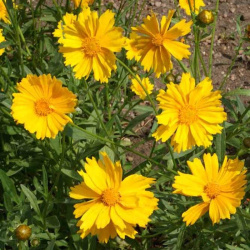 On Sale!
Dwarf Lance Leaved Coreopsis Seeds
Coreopsis lanceolata
These easy-to-grow wildflowers are a shorter member of the family that bloom late summer. A popular choice of beginning gardeners and master gardeners alike, who have limited space in their garden.Quick View$3.48 Pkt - $7.92 / Oz
On Sale!
Dwarf Lance Leaved Coreopsis Seeds
Coreopsis lanceolata
These easy-to-grow wildflowers are a shorter member of the family that bloom late summer. A popular choice of beginning gardeners and master gardeners alike, who have limited space in their garden.Quick View$3.48 Pkt - $7.92 / Oz -
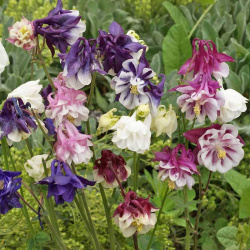 Dwarf Columbine Seed Mix
Aquilegia vulgaris
These delicate, nodding blossoms grow wild throughout much of northern Europe. This 16" dwarf variety produces a lovely mix of colors that will brighten any space!Quick View$3.48 Pkt - $12.65 / Oz
Dwarf Columbine Seed Mix
Aquilegia vulgaris
These delicate, nodding blossoms grow wild throughout much of northern Europe. This 16" dwarf variety produces a lovely mix of colors that will brighten any space!Quick View$3.48 Pkt - $12.65 / Oz -
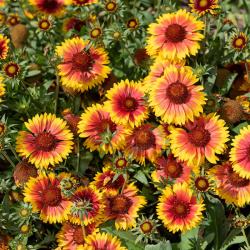 Out Of Stock
Dwarf Perennial Gaillardia Seeds
Gaillardia aristata
This showy golden flower is a petite version of the very popular Blanket Flower, and its short stature makes it ideal for small gardens or even container gardening. The easy-to-grow blooms provide color all season long.Quick Viewx
Out Of Stock
Dwarf Perennial Gaillardia Seeds
Gaillardia aristata
This showy golden flower is a petite version of the very popular Blanket Flower, and its short stature makes it ideal for small gardens or even container gardening. The easy-to-grow blooms provide color all season long.Quick ViewxDwarf Perennial Gaillardia Seeds
Gaillardia aristata
This showy golden flower is a petite version of the very popular Blanket Flower, and its short stature makes it ideal for small gardens or even container gardening. The easy-to-grow blooms provide color all season long.
$3.96 Pkt - $17.16 / Oz -
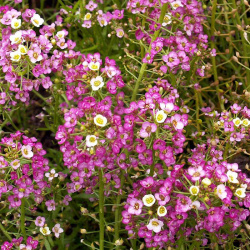 Dwarf Pink Sweet Alyssum Seeds
Lobularia maritima
This easy-to-grow annual forms a low carpet of fragrant pink blossoms. This popular flower makes an ideal border, groundcover, or container plant because of it's small habit. Even though it is an annual, it readily reseeds itself to produce the next generation of flowers.Quick Viewx
Dwarf Pink Sweet Alyssum Seeds
Lobularia maritima
This easy-to-grow annual forms a low carpet of fragrant pink blossoms. This popular flower makes an ideal border, groundcover, or container plant because of it's small habit. Even though it is an annual, it readily reseeds itself to produce the next generation of flowers.Quick ViewxDwarf Pink Sweet Alyssum Seeds
Lobularia maritima
This easy-to-grow annual forms a low carpet of fragrant pink blossoms. This popular flower makes an ideal border, groundcover, or container plant because of it's small habit. Even though it is an annual, it readily reseeds itself to produce the next generation of flowers.
$3.48 Pkt - $17.16 / Oz -
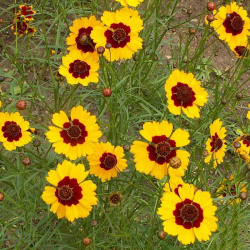 Dwarf Plains Coreopsis Seeds
Coreopsis tinctoria
This slender annual produces masses of yellow flowers with contrasting deep red centers. A popular choice of beginning gardeners because it is so easy to grow and produces a gratifying flower.Quick View$2.98 Pkt - $7.59 / Oz
Dwarf Plains Coreopsis Seeds
Coreopsis tinctoria
This slender annual produces masses of yellow flowers with contrasting deep red centers. A popular choice of beginning gardeners because it is so easy to grow and produces a gratifying flower.Quick View$2.98 Pkt - $7.59 / Oz -
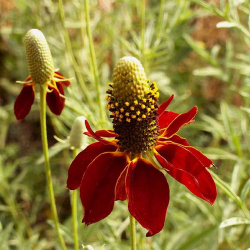 Out Of Stock
Dwarf Red Coneflower Seeds
Ratibida columnifera
This native dwarf wildflower bears a deep red flower beneath a long brown cone. This perennial does well in hot, dry areas, and is pretty easy to grow.Quick View$3.25 Pkt - $8.20 / Oz
Out Of Stock
Dwarf Red Coneflower Seeds
Ratibida columnifera
This native dwarf wildflower bears a deep red flower beneath a long brown cone. This perennial does well in hot, dry areas, and is pretty easy to grow.Quick View$3.25 Pkt - $8.20 / Oz -
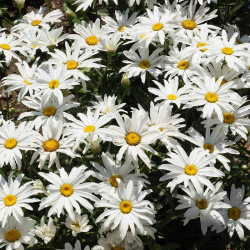 On Sale!
Dwarf Shasta Daisy Seeds
Chrysanthemum maximum
This daisy looks a lot like the Ox Eye Daisy, but it is not as invasive, and so is a better option in most cases. This delightful dwarf variety will bring charm all summer long.Quick View$3.48 Pkt - $14.91 / Oz
On Sale!
Dwarf Shasta Daisy Seeds
Chrysanthemum maximum
This daisy looks a lot like the Ox Eye Daisy, but it is not as invasive, and so is a better option in most cases. This delightful dwarf variety will bring charm all summer long.Quick View$3.48 Pkt - $14.91 / Oz -
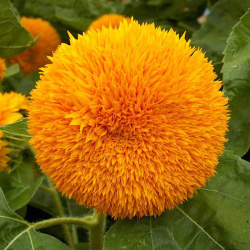 On Sale!
Dwarf Sungold Sunflower Seeds
Helianthus annuus
Affectionately known as Teddy Bears, these fluffy yellow pom-poms are fun for children and adults alike. This easy-to-grow dwarf variety grows only a few feet high, so it is helpful for small people to have the flowers at their own level.Quick View$3.48 Pkt - $7.27 / Oz
On Sale!
Dwarf Sungold Sunflower Seeds
Helianthus annuus
Affectionately known as Teddy Bears, these fluffy yellow pom-poms are fun for children and adults alike. This easy-to-grow dwarf variety grows only a few feet high, so it is helpful for small people to have the flowers at their own level.Quick View$3.48 Pkt - $7.27 / Oz -
 Eaton's Penstemon Seeds
Penstemon eatonii
Also known as Firecracker Penstemon, this perennial blazes with intense crimson color. This western native thrives in desert areas, so it is very resistant to heat and drought, making it an ideal choice for xeriscaping.Quick View$3.48 Pkt - $18.77 / Oz
Eaton's Penstemon Seeds
Penstemon eatonii
Also known as Firecracker Penstemon, this perennial blazes with intense crimson color. This western native thrives in desert areas, so it is very resistant to heat and drought, making it an ideal choice for xeriscaping.Quick View$3.48 Pkt - $18.77 / Oz -
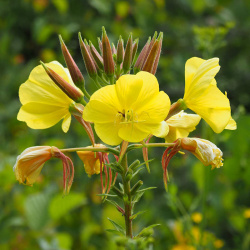 On Sale!
Evening Primrose Seeds
Oenothera biennis
Brilliant yellow blossoms bedeck this biennial wildflower in the cool of the day, with new flowers appearing each evening. Long valued for its herbal and medicinal use, this wildflower is also easy to grow.Quick View$2.98 Pkt - $7.52 / Oz
On Sale!
Evening Primrose Seeds
Oenothera biennis
Brilliant yellow blossoms bedeck this biennial wildflower in the cool of the day, with new flowers appearing each evening. Long valued for its herbal and medicinal use, this wildflower is also easy to grow.Quick View$2.98 Pkt - $7.52 / Oz -
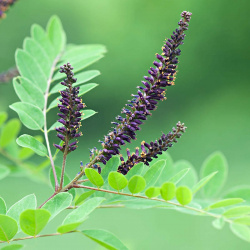 On Sale!
False Indigo Seeds
Amorpha fruticosa
Growing naturally in prairie meadows, False Indigo thrives across most of the United States. This native shrub also has attractive, sweet-scented foliage. Cannot ship to WA State.Quick View$3.48 Pkt - $14.49 / Oz
On Sale!
False Indigo Seeds
Amorpha fruticosa
Growing naturally in prairie meadows, False Indigo thrives across most of the United States. This native shrub also has attractive, sweet-scented foliage. Cannot ship to WA State.Quick View$3.48 Pkt - $14.49 / Oz -
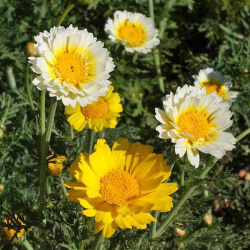 On Sale!
Garland Daisy Seeds
Chrysanthemum coronarium
Originating in the Mediterranean region, these showy annual daisies make an attractive addition to any planting. The fragrant greens are also featured in Chinese, Japanese, and Taiwanese cuisine.Quick View$3.48 Pkt - $5.96 / Oz
On Sale!
Garland Daisy Seeds
Chrysanthemum coronarium
Originating in the Mediterranean region, these showy annual daisies make an attractive addition to any planting. The fragrant greens are also featured in Chinese, Japanese, and Taiwanese cuisine.Quick View$3.48 Pkt - $5.96 / Oz -
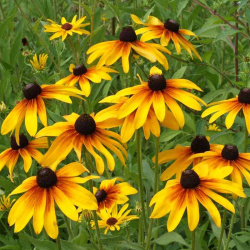 On Sale!
Gloriosa Daisy Seeds
Rudbeckia hirta
It is hard to believe that these large beautiful flowers can be packed into little seeds! These jumbo Black-eyed Susan blooms have decorative red accents near the center cone, and will make your garden look picture perfect! This Biennial is easy to grow and attracts butterflies.Quick Viewx
On Sale!
Gloriosa Daisy Seeds
Rudbeckia hirta
It is hard to believe that these large beautiful flowers can be packed into little seeds! These jumbo Black-eyed Susan blooms have decorative red accents near the center cone, and will make your garden look picture perfect! This Biennial is easy to grow and attracts butterflies.Quick ViewxGloriosa Daisy Seeds
Rudbeckia hirta
It is hard to believe that these large beautiful flowers can be packed into little seeds! These jumbo Black-eyed Susan blooms have decorative red accents near the center cone, and will make your garden look picture perfect! This Biennial is easy to grow and attracts butterflies.
$2.98 Pkt - $7.65 / Oz -
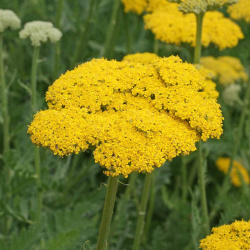 Gold Yarrow Seeds
Achillea filipendulina
Fragrant, fern-like foliage, and cheerful, long-lasting flowers make this an enduring favorite. It is quite a bit taller and brighter than the Common White Yarrow. Beautiful en masse, or as a border plant.Quick View$3.48 Pkt - $16.57 / Oz
Gold Yarrow Seeds
Achillea filipendulina
Fragrant, fern-like foliage, and cheerful, long-lasting flowers make this an enduring favorite. It is quite a bit taller and brighter than the Common White Yarrow. Beautiful en masse, or as a border plant.Quick View$3.48 Pkt - $16.57 / Oz -
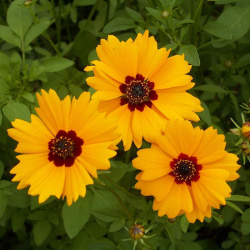 Golden Wave Tickseed Seeds
Coreopsis basalis
Native to the southern United States, this cheery, yellow wildflower will brighten any garden as an annual. This plant is also popular for butterfly gardens because it is showy, and it is a food source for pollinators.Quick View$2.98 Pkt - $9.35 / Oz
Golden Wave Tickseed Seeds
Coreopsis basalis
Native to the southern United States, this cheery, yellow wildflower will brighten any garden as an annual. This plant is also popular for butterfly gardens because it is showy, and it is a food source for pollinators.Quick View$2.98 Pkt - $9.35 / Oz -
 Golden West California Poppy Seeds
Eschscholzia californica
Search no further with these golden treasures. This variety is the golden yellow version of the immensely popular Orange California Poppy. Very easy to grow, so recommended for those that are just starting out in their gardening journey.Quick View$2.98 Pkt - $10.04 / Oz
Golden West California Poppy Seeds
Eschscholzia californica
Search no further with these golden treasures. This variety is the golden yellow version of the immensely popular Orange California Poppy. Very easy to grow, so recommended for those that are just starting out in their gardening journey.Quick View$2.98 Pkt - $10.04 / Oz











